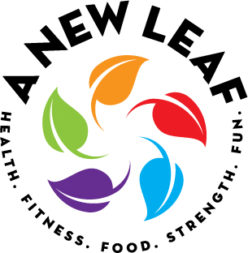Did you just cringe a little reading this title??? I’m not surprised. It’s a dirty little word that makes people feel fat. Well, I’m a big fan of carbs, and perhaps after this little ditty you’ll feel the same way! I found this when I was searching around in my email for other things…I forgot that I had written it for a co-worker’s daughter was heading off to college. Give it a read and see if you can let go of that nasty feeling about these little buggers…
Carbohydrates are your body’s first choice for energy; they also aid in recovery, and preserve muscle mass. Carbs get a bad rap, because our consumption of carbohydrates should be largely based on the amount of energy we expend. We also need to be mindful of our physiological response to them. When we eat a meal, the hormone insulin steps in to regulate glucose or the sugar floating around in the bloodstream after we eat. Insulin is a hormone that comes from the pancreas which helps to promote the uptake of glucose into cells; especially muscle and fat cells. If excess glucose is in the blood stream, it is stored away as fat; in other words, but not utilizing the carbohydrates we eat, or by consuming foods that are easily converted to glucose in abundance, there will be a lot more glucose present: and will be stored as fat.
All that being said, not all carbs are created equal. The foods that quickly increase glucose are generally in the form of “empty carbs”, or simple sugars. Sticking with the less packaged, “complex carbs”, in the form of whole foods is always a better choice. Complex carbohydrates can be found in fruits and vegetables, pastas, whole grain breads, and rice. These foods are a better choice for overall health; as it takes your body longer to break these foods down to be utilized or stored. Anything that is close to sugar, aka baked goods like muffins, bagels, cookies, etc. should be eaten sparingly, as it takes little time to convert them to glucose, and then to fat cells for storage.If you are a long distance runner or cyclist, the foods that you eat will be mostly starchy carbohydrates, especially during the activity; because these foods in particular take your body little time to convert to the sugar that you need for energy (glucose). If you are moderately active; aka. gym a few times a week, etc. your energy needs will look much different than an elite endurance athlete mentioned above. Good sources grains, legumes, seeds, pastas, fruits, and vegetables.
Something else to consider is that your brain runs solely on glucose, and in extreme cases, keytones. Keytones are mobilized proteins from broken down musculature. This is associated with starvation, and what we’re trying to avoid by consuming enough carbohydrate in your caloric needs. When carbohydrates are deficient, a key component to fat oxidization (burning) is incomplete. “Fats burn in the flame of carbohydrates”. The general recommendation is small frequent meals every 3hrs incorporating the minimum of 200-400 calories per day of carbohydrate. For every gram of carbohydrate, there’s 4 calories. So, if you have an english muffin with 26 grams of carbohydrate, there’s 104 calories of calories just from carbohydrate.
For recovery after exercise, to help replace glycogen stored in the muscle, and to utilized amino acids to build more muscle, it’s recommended that you consume a mix of carbohydrate and protein within 1 hour of the activity; this is called “the golden hour”, and is when your body’s maximum uptake of nutrients is taking place. Suggestions for a meal would be an egg breakfast sandwich (1 english muffin, 1 egg), or a turkey sandwich, with whole wheat bread. Use condiments sparingly; I like to use avocado (good fat), and vegetables (relishes) for my condiments. Fuel your body with nutrient dense foods, not empty calories post-exercise, it matters!
The glycemic index is a measure of how different carbohydrate foods consumed affect the body’s blood sugar level. Foods that are high on the list, are foods which increase your blood sugar (glucose) to high levels for longer, and cause an increase in insulin levels. Better choices for health are low-glycemic carbohydrates.
Here are the benefits to sticking with a low-glycemic diet (copied from: http://www.gisymbol.com.au/aboutGI.php):
• Help to fill you up and keep you feeling satisfied for longer, avoiding over eating or too much snacking.
• Lower your insulin levels which makes fat easier to burn and less likely to be stored.
• Help you to lose body fat and maintain lean muscle tissue.
• Reduce your triglycerides, total and ‘bad’ (LDL) cholesterol.
• Increase your levels of ‘good’ (HDL) cholesterol.
• Reduce your risk of developing type 2 diabetes.
• Help to manage your blood glucose levels and reduce your risk of developing diabetes complications.
• Reduce your risk of developing cardiovascular disease.
• Reduce your risk of developing some cancers
• Reduce your risk of developing certain eye diseases.
• Improve your skin
• Sustain your energy levels longer, improving both mental and physical performance.
These are some foods Low and Medium glycemic index foods, and good foods to lean toward for your carbohydrate consumption:
Low:
apple
cherries
kidney beans
chickpeas
lentils
peaches
plums
milk
yogurt
Medium
all-bran cereal
banana
grapes
oatmeal
pasta
rice (basmati vs. jasmine)
whole grain bread
yams
corn
Another correlated topic is a low energy dense diet. Similar to the glycemic index, when sticking to foods that are lower in energy density (i.e. lower kcal), can help to contribute to weight loss by keeping the feeling of satiety, and thus less deprivation. More on that topic at a later date!
Take care of yourselves, others, and get sweaty today!
Jess
This entry was posted in Uncategorized on August 21, 2015 by Jessica.



